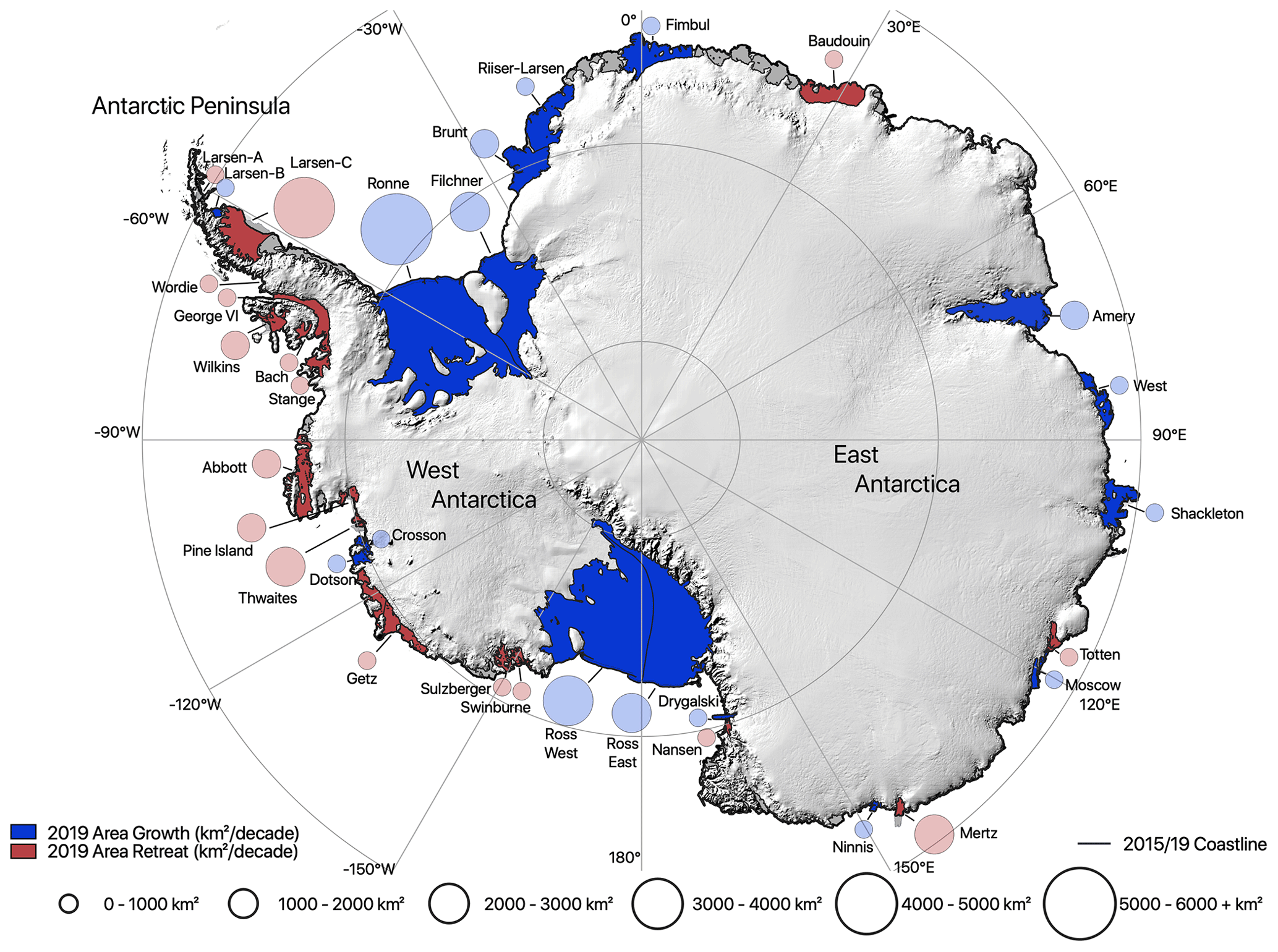Antarctica is one of the most unique and fascinating places on Earth. As the world’s southernmost continent, it is home to awe-inspiring landscapes, ancient ice sheets, and a delicate ecosystem that has adapted to its extreme conditions. Despite being one of the most isolated places on the planet, Antarctica’s role in Earth’s climate system and its intriguing mysteries continue to captivate scientists and adventurers alike.
Contents
- 1 The Harsh Geography of Antarctica
- 2 Life at the Bottom of the World
- 3 The Importance of Antarctica in Climate Science
- 4 The Antarctic Treaty and Conservation Efforts
- 5 The Mystery of Antarctica’s Subglacial Lakes
- 6 The Future of Antarctica
- 7 The Inhabitants of Antarctica: A Resilient Ecosystem
- 8 Human Exploration and Research in Antarctica
- 9 Challenges Facing Antarctica and Its Preservation
- 10 The Fascination with Antarctica’s Geological History
- 11 Adventure Tourism in Antarctica: A Growing Trend
- 12 The Future of Antarctica: A Call for Global Cooperation
- 13 Author
The Harsh Geography of Antarctica
Antarctica spans over 14 million square kilometers, making it the fifth-largest continent. It is almost entirely covered by ice, which reaches depths of up to 4 kilometers in certain areas. Despite its icy cover, Antarctica is considered a desert due to its extremely low annual precipitation, which is comparable to the Sahara. The continent is divided into two regions: East Antarctica, which is largely a high plateau, and West Antarctica, a region of mountains, islands, and ice sheets that is geologically younger and more unstable.

Life at the Bottom of the World
Antarctica’s extreme conditions might seem inhospitable, but a surprising array of life forms has adapted to thrive there. Penguins, seals, and a variety of seabirds are some of the most iconic inhabitants. Beneath the ice, the Southern Ocean teems with marine life, including krill, which serves as a crucial food source for whales, seals, and seabirds. The continent’s ecosystems are delicately balanced and vulnerable to changes, particularly from human activities and climate change.
The Importance of Antarctica in Climate Science
The icy continent is a crucial component of Earth’s climate system. The massive ice sheets of Antarctica contain around 60% of the world’s fresh water, and their stability is essential for regulating global sea levels. Scientists closely monitor Antarctica to understand climate patterns and assess the impacts of global warming. The Antarctic ice cores provide a record of Earth’s climate history going back hundreds of thousands of years, offering invaluable insights into past climate changes.
The Antarctic Treaty and Conservation Efforts
In 1959, the Antarctic Treaty was established to preserve the continent for peaceful scientific research. This treaty, signed by over 50 countries, prohibits military activity, mineral mining, and nuclear testing on the continent. It also encourages cooperation among nations for scientific research. Conservation efforts focus on protecting the unique ecosystems and minimizing human impact, as the region remains fragile in the face of climate change.
The Mystery of Antarctica’s Subglacial Lakes
Beneath the ice of Antarctica lie hundreds of subglacial lakes, hidden from view and untouched by sunlight for millions of years. Lake Vostok is the largest and most famous of these lakes, buried under nearly 4 kilometers of ice. Scientists believe these isolated ecosystems could harbor ancient forms of microbial life, providing clues about life’s potential on other icy worlds, such as Jupiter’s moon Europa.
The Future of Antarctica
The future of Antarctica is uncertain as it faces the challenges of climate change. Rising temperatures and melting ice have the potential to disrupt the global climate system and raise sea levels significantly. However, Antarctica also represents hope, as international cooperation has proven effective in protecting its environment. Continued scientific research and global commitment to conservation will be essential in preserving this icy desert for future generations.
Antarctica remains a place of wonder, mystery, and inspiration. Its remote, pristine landscapes remind us of the planet’s natural beauty and the need to protect it. As scientists continue to unlock its secrets, Antarctica will likely remain a vital piece of the puzzle in understanding Earth’s past, present, and future.

The Inhabitants of Antarctica: A Resilient Ecosystem
While Antarctica’s climate may be hostile to humans, it supports a surprising variety of wildlife. Species like emperor and Adélie penguins have adapted to the harsh conditions, with emperor penguins breeding during the winter in temperatures as low as -60°C. Seals, such as the Weddell and leopard seals, have also found ways to survive, using their blubber to insulate against the cold. Moreover, Antarctica is home to diverse seabird species, like the snow petrel, which can fly thousands of kilometers across the frozen landscape in search of food.
Below the ice, the waters of the Southern Ocean are teeming with life. The Antarctic krill, a tiny crustacean, plays a crucial role in the food chain, serving as a primary food source for larger marine animals, including whales, seals, and seabirds. These organisms have evolved to cope with the extreme cold, and they form the foundation of a complex and interdependent ecosystem that thrives even in one of the most inhospitable places on Earth.
Human Exploration and Research in Antarctica
Human interaction with Antarctica began in the early 19th century with explorers like James Clark Ross and Ernest Shackleton, whose daring expeditions laid the groundwork for scientific research on the continent. Today, Antarctica is dotted with research stations operated by countries around the world. These stations facilitate scientific studies on a range of topics, from glaciology to biology and atmospheric science.
Each year, scientists from various disciplines travel to Antarctica to conduct research that would be impossible anywhere else. The continent’s isolation and extreme environment provide unique opportunities to study climate change, ozone depletion, and ecosystems that have been undisturbed for millennia. The data gathered from these research stations contribute significantly to our understanding of global environmental issues and help shape international policies aimed at addressing climate change.
Challenges Facing Antarctica and Its Preservation
The effects of climate change are particularly pronounced in Antarctica, where rising temperatures are causing ice shelves to melt at an alarming rate. The Antarctic Peninsula is one of the fastest-warming areas on Earth, and scientists are closely monitoring its impact on global sea levels. If significant portions of the Antarctic ice sheet were to melt, sea levels could rise by several meters, with devastating consequences for coastal communities worldwide.
In addition to climate change, human activity presents other challenges to partaitogel. While the Antarctic Treaty helps regulate human presence, increasing tourism and scientific operations can strain the delicate environment. Conservation groups are advocating for stricter regulations to limit human impact and preserve Antarctica’s pristine wilderness.
The Fascination with Antarctica’s Geological History
Antarctica was not always a frozen wasteland. Millions of years ago, it was part of the supercontinent Gondwana and had a temperate climate. Fossil evidence suggests that ancient Antarctica was home to forests and a variety of prehistoric animals. As the continent drifted southward and the climate cooled, Antarctica gradually became the icy desert it is today. This transformation provides valuable insights into Earth’s geological history and the processes that have shaped our planet over time.
The discovery of fossils and ancient plant matter beneath the ice offers a glimpse into a time when Antarctica was lush and green. These findings help scientists understand how life on Earth has adapted to changing climates and provide clues about how current ecosystems might respond to global warming.

Adventure Tourism in Antarctica: A Growing Trend
In recent years, adventure tourism has become increasingly popular in Antarctica. Each year, thousands of tourists visit the continent to experience its pristine landscapes and encounter its unique wildlife. Activities like iceberg kayaking, ice climbing, and whale watching attract adventurers from around the world. However, this influx of visitors raises concerns about the environmental impact of tourism on Antarctica’s fragile ecosystems.
Tour operators must follow strict guidelines to minimize their impact, but the growing popularity of Antarctic tourism underscores the need for sustainable practices. Balancing human curiosity with environmental preservation is a key challenge for the future of tourism in Antarctica.
The Future of Antarctica: A Call for Global Cooperation
As one of the last truly wild places on Earth, Antarctica holds a special place in the global consciousness. The continent’s future depends on international cooperation and a commitment to preserving its unique environment. The Antarctic Treaty is a model for peaceful collaboration, but its protections must be strengthened to address emerging threats like climate change and resource exploitation.
The future of Antarctica is uncertain, but the global community has the opportunity to protect this icy desert for future generations. By valuing Antarctica for its scientific importance and natural beauty, we can ensure that it remains a place of wonder and discovery for years to come.
Antarctica’s icy expanses, mysterious subglacial lakes, and resilient ecosystems remind us of the Earth’s incredible diversity and the need for vigilance in protecting it. As we continue to explore and understand this remote continent, Antarctica will remain a testament to the power of nature and the importance of stewardship in a changing world.
Also read: NPM vs Yarn: Mana yang Lebih Baik untuk Proyek JavaScript Anda?



